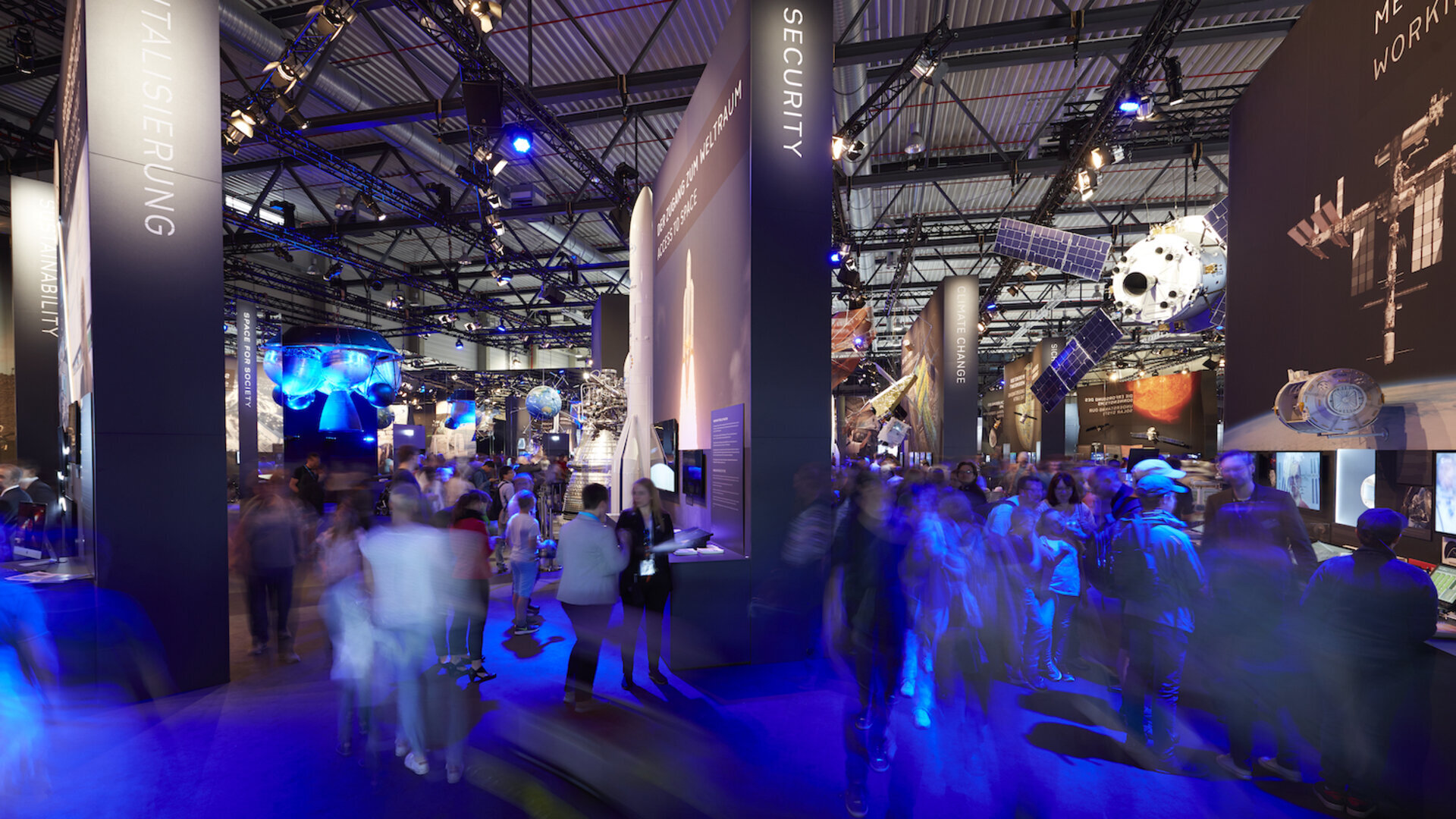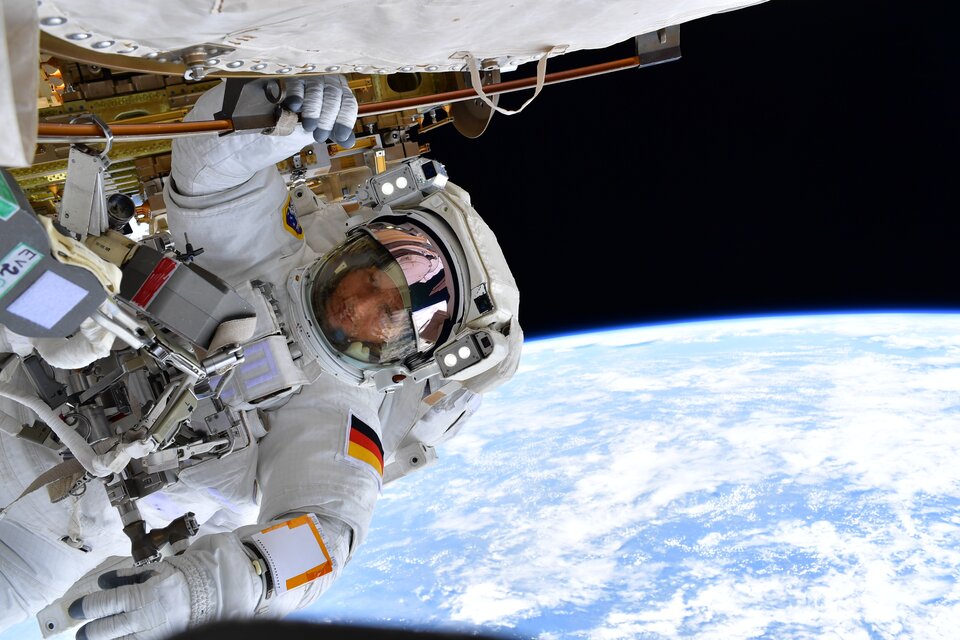22.06.2022

Crowds at the Berlin International Airshow – which will focus on innovation, new technology and sustainability – are set to be wowed by space.
Some 180,000 people attended the event when it was last held in 2018. This year’s edition – the first since the pandemic – will run from 22 to 26 June.
ESA is taking part in the Space Pavilion to present the newest programmes, missions and technologies at the heart of Europe’s space effort. The Pavilion also highlights upcoming commercial opportunities in the space sector for German, European and global industry focussing on sustainability and climate change, digitalization, innovation, research and space safety.

Public days 25-26 June
While ILA Berlin is limited to professional audiences on the first three days, general public are strongly welcome to visit on 25-26 June.
During the weekend, the Space Pavilion will provide a full programme of stage talks conducted in German suitable for everyone and presenting current and upcoming missions, how space data help us understand climate change and react to natural disasters, careers in space, children’s activities and much more.
ESA astronaut Matthias Maurer, recently returned from his Cosmic Kiss mission to the International Space Station, and former ESA astronaut Reinhold Ewald will lead public discussions focussing on human spaceflight and science in orbit.
Professional days 22-24 June
On 22 June Josef Aschbacher, Director General of ESA, together with Prof. Anke Kaysser-Pyzall and Dr Walther Pelzer of DLR and Marco Fuchs of BDLI, will take part in the opening of the Joint ESA/DLR/BDLI ILA Space Pavilion with a ribbon cutting ceremony.
German chancellor Olaf Scholz will also visit the pavilion and will be joined by ESA astronauts Alexander Gerst – whose two missions to the International Space Station took place in 2014 and 2018 – and Matthias Maurer, who returned from the Station on 6 May 2022, after 176 days in space.
New applications for Earth data
The opening day will also see experts from ESA, ECMWF, Eumetsat, DLR the European Commission and German industry discussing current and upcoming Earth observation missions, use of EO data for climate, weather and meteorology and disaster management from space.

Civil aspects of space safety
Because not only astronauts but also people on Earth rely on space for their safety and security, it is vital to keep satellites and crewed vessels safe and secure from natural and human-caused hazards. Solar storms can damage satellites in space and electrical transmission lines on Earth, resulting in potentially large and long-lasting power cuts. Meanwhile space debris is increasing, imperilling active satellites in orbit as well as the ISS. Timely and accurate warnings of hazards are needed, alongside measures to deal with them.
On 23 June, Rolf Densing, ESA’s Director of Operations, will address the civil aspects of safety and protection, including space debris, planetary defence and space weather, as part of a panel discussion including some of Europe’s top experts on space safety.

ESA is going to the Moon together with its international partners. NASA’s Artemis programme plans to return humans to the Moon and, in cooperation with ESA and other partners, will put into lunar orbit a Gateway with living quarters for astronauts. ESA is constructing three service modules for the Artemis programme, including the Gateway’s ESPRIT communications module.
On 24 June, Didier Schmitt of ESA’s Human Spaceflight Directorate will lead a panel discussion on how Europe can best prepare for our post-ISS and deep-space exploration future.
The same day, Elodie Viau, Director of Telecommunications and Integrated Applications at ESA, is scheduled to discuss the role of space in digitalisation, highlighting quantum communications and other future technologies.
Also on 24 June, Gunther Hasinger, ESA’s Director of Science, will moderate a panel discussion on innovation and research in space, including the NASA/ESA/CSA James Webb Space Telescope. The largest and most complex observatory ever launched into space, Webb is going through a six-month period of preparation before it can begin science work, calibrating its instruments to its space environment and aligning its mirrors. Its first full-colour images and spectroscopic data are due to be revealed on 12 July.
ESA will stream various sessions on ESA Web TV Two from 22 to 24 June.
About the Space Pavilion at ILA
ESA is taking part in the Space Pavilion together with Germany’s Federal Ministry of Economics and Climate Protection, the German Aerospace Industries Association BDLI and DLR – the German Aerospace Center.
Quelle: ESA
